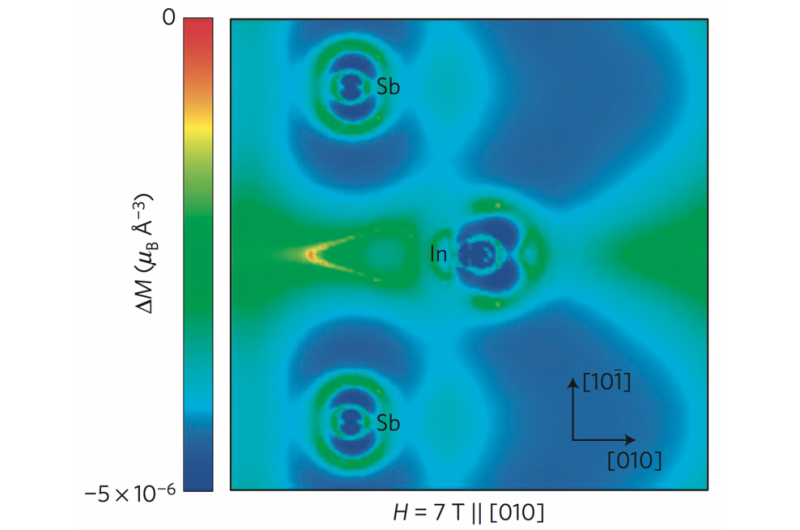A team led by Ohio State's Wolfgang Windl, Ph.D., used OSC's Oakley Cluster to calculate acoustic phonon movement within an indium-antimonide semiconductor under a magnetic field. Their findings show that phonon amplitude-dependent magnetic moments are induced on the atoms, which change how they vibrate and transport heat. Credit: OSU
(Phys.org)—It was a an interesting week for physics as a team with the Australian National University conducted an experiment that confirmed quantum theory weirdness—they carried out John Wheeler's famous delayed-choice thought experiment in which a moving object is given the choice to behave like a particle or a wave—Wheeler asked, at what point does the object decide? Meanwhile another team of researchers at the Ohio Supercomputer Center proved that magnetism can control heat and sound—showing that phonons have magnetic properties.
Researchers with TU Delft Quantum broke the aluminium "monopoly"—they found a way to demonstrate the difference between the even and odd occupation of a superconductor in high magnetic fields, perhaps helping to pave the way for utilizing the Majorana as a quantum bit. In related news, researchers with the University of Texas found a way to emulate a quantum computer using a classical system—including entanglement and superposition.
In other news, a team of researchers at Columbia Engineering were the first to create a single-molecule diode—and claim it is 50 times better than other designs and will likely have applications in future nanoscale devices. Also, in what could be groundbreaking news, an ophthalmologist claimed his Ocumetics Bionic Lens will revolutionize vision correction. Robotics was in the news as well, as one team at MIT debuted a cheetah robot that lands the running jump—the first four legged robot able to jump over objects while running. Meanwhile, another team made up of members from MIT and Technische Universitat in Germany demonstrated at the ICRA 2015 conference in Seattle, a self-folding robot that walks, swims, climbs and dissolves. And unrelated but still interesting, a team of researchers at Indiana University found that, like Sleeping Beauty, some research lies dormant for decades, suggesting that some research truly is ahead of its time.
And finally, if you have been hoping that science would find a way to add machine parts to the human brain to make it smarter in your lifetime, you might want to ponder the ideas presented by Jeff Stibel of Tufts University, who addressed the coming merge of human and machine intelligence via computer chips in the brain that allow for connecting directly to the Internet.
© 2015 Phys.org
























